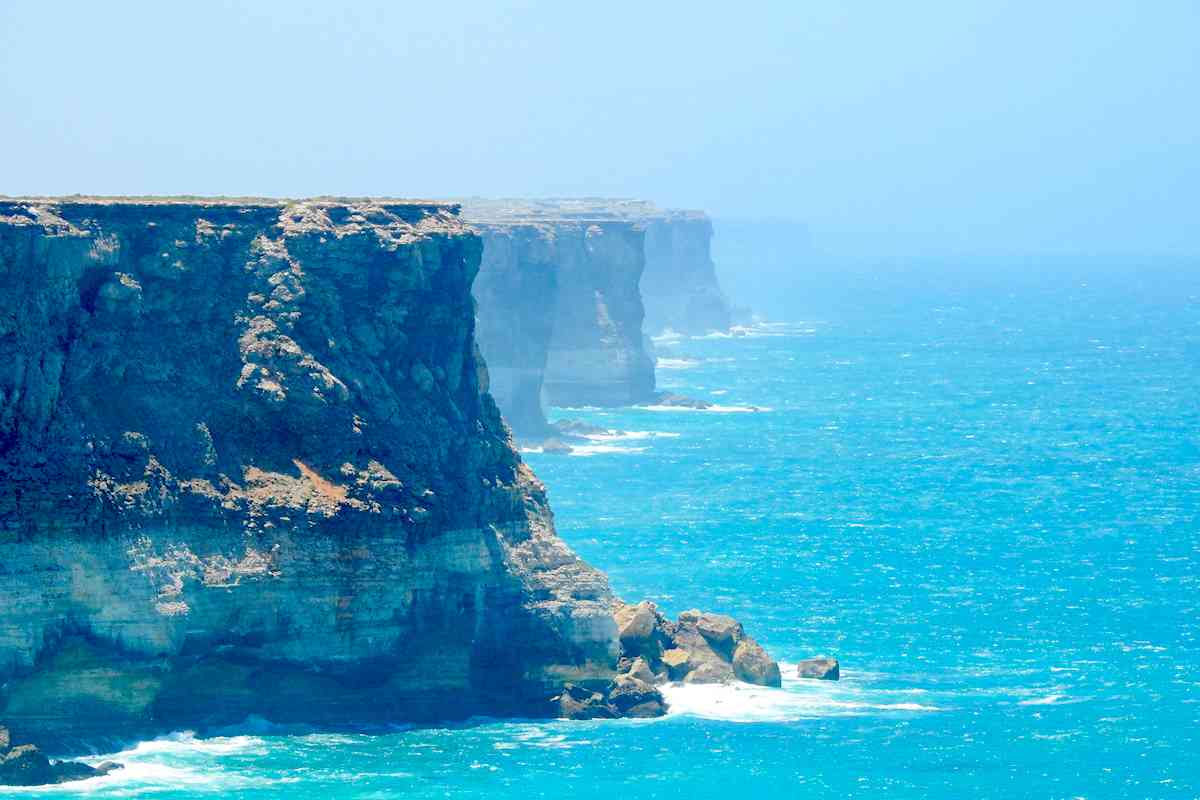I wandered into Wandilla Beach, which is pretty spectacular beach to the west of Fowlers Bay on the south coast of South Australia.
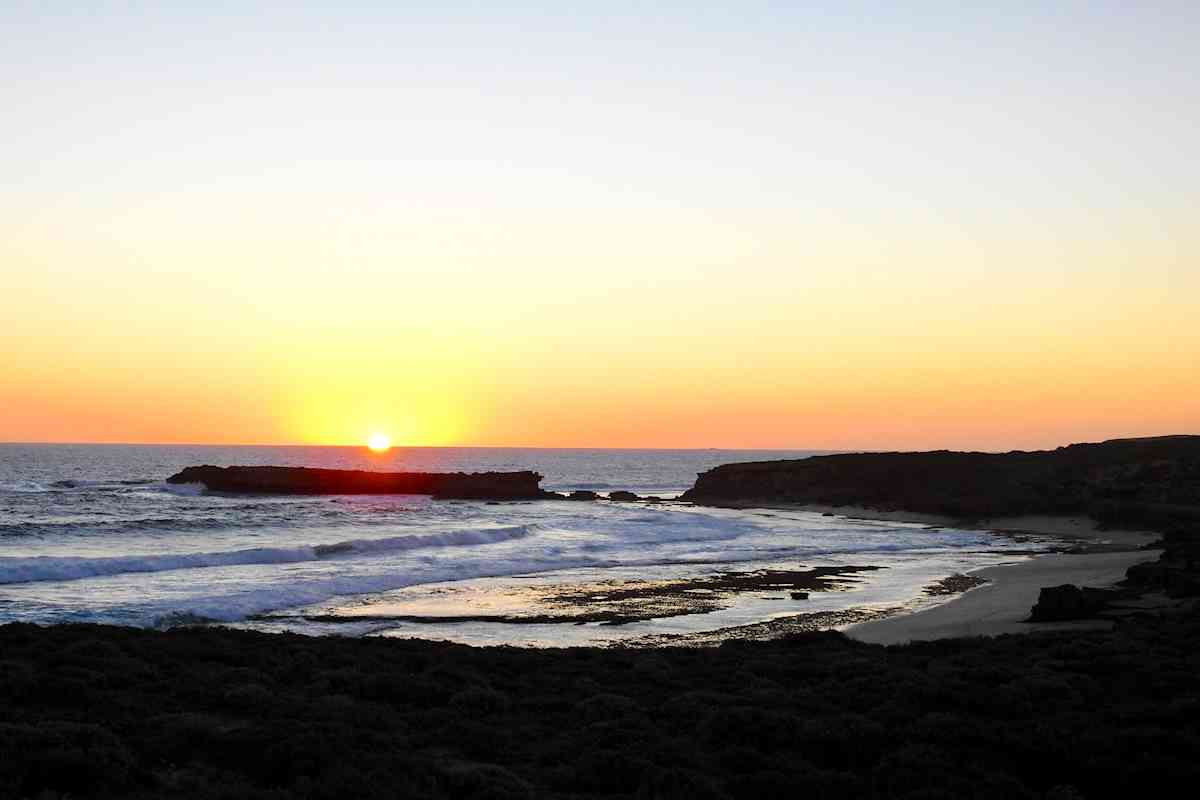
I was able to get the camper sheltered from the gale-force winds, so I decided to spend the night here. It was really beautiful watching the sun set over this pretty little beach.
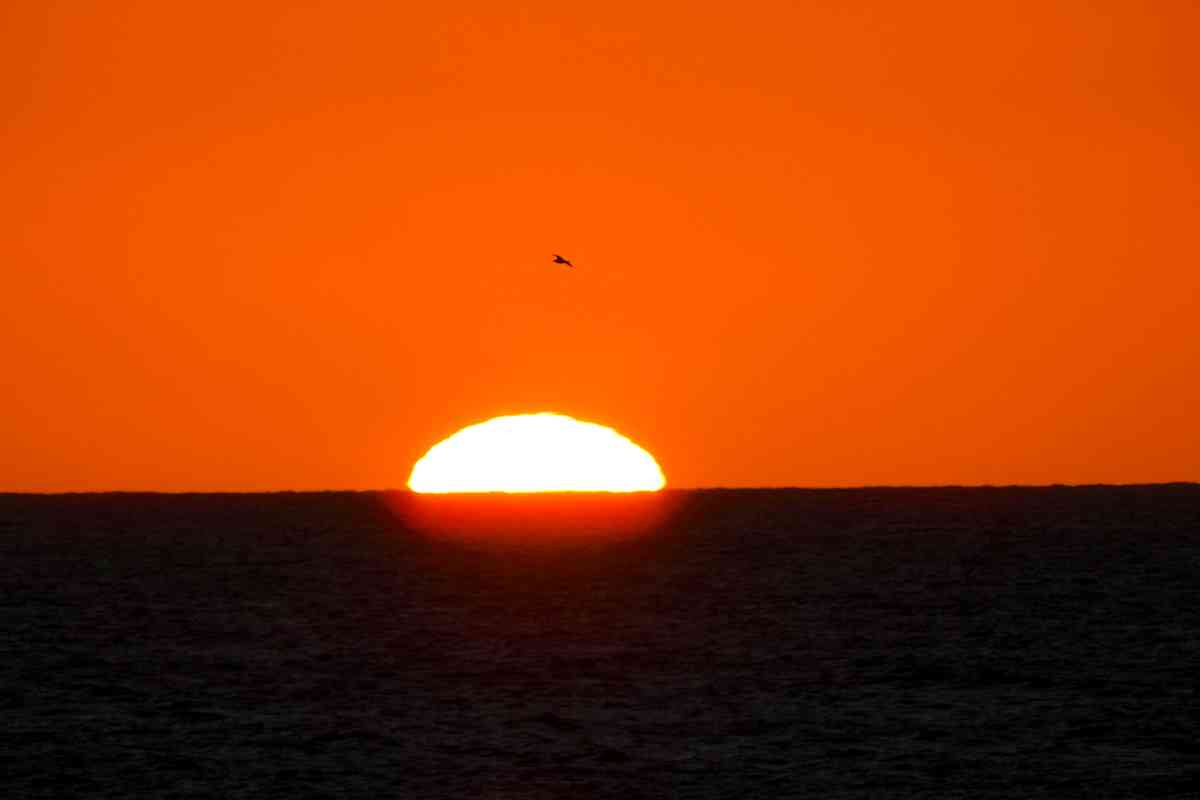
Next day, I headed north from the Eyre Highway to the now abandoned railway siding of Ooldea.
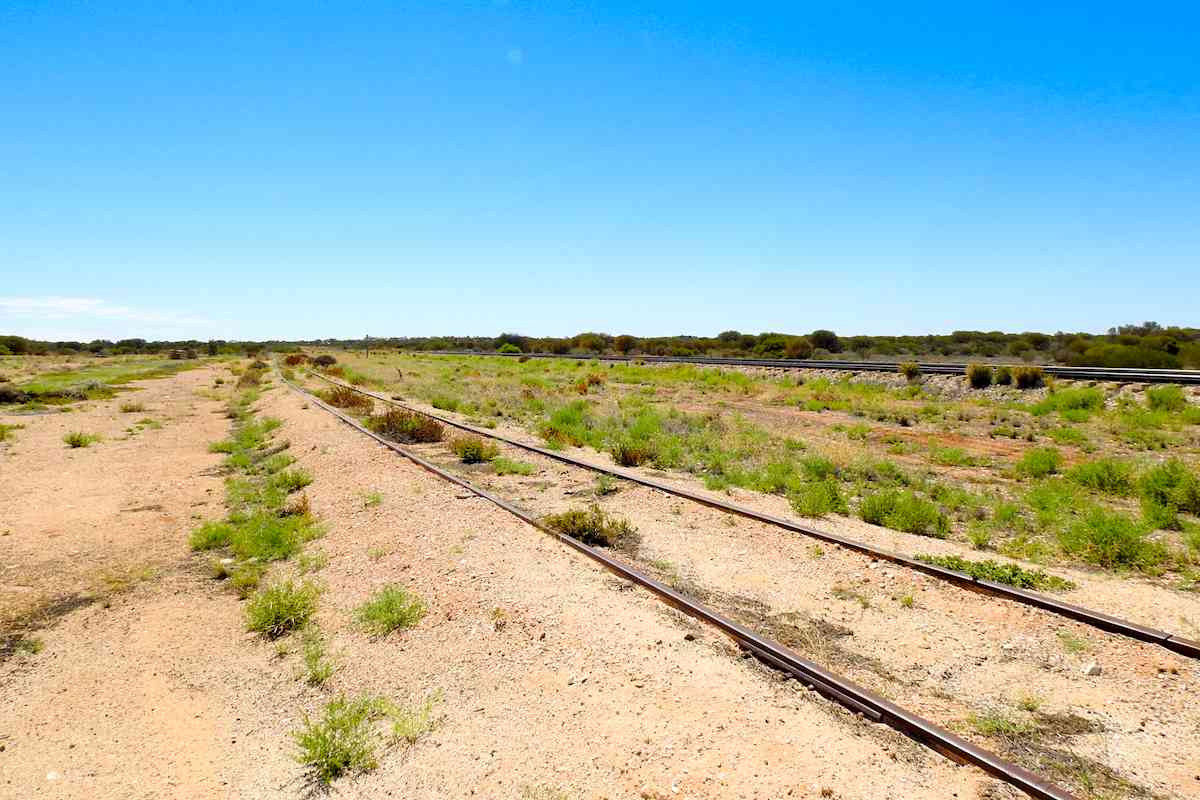
The construction of the transcontinental railway had proceeded concurrently from the east and the west, the two rail lines advancing across thousands of kilometres from each direction.
In October 1917, the two lines met here at Ooldea. The standard gauge rails were laid with such precision that they met exactly and when joined, the transcontinental railway was complete.

A monument celebrated this amazing achievement but made of wood, it sadly disintegrated over time. In 2017, to celebrate the 100th anniversary of the joining of the railway a new monument, a copy of the original but in steel, was unveiled by Dick Smith.
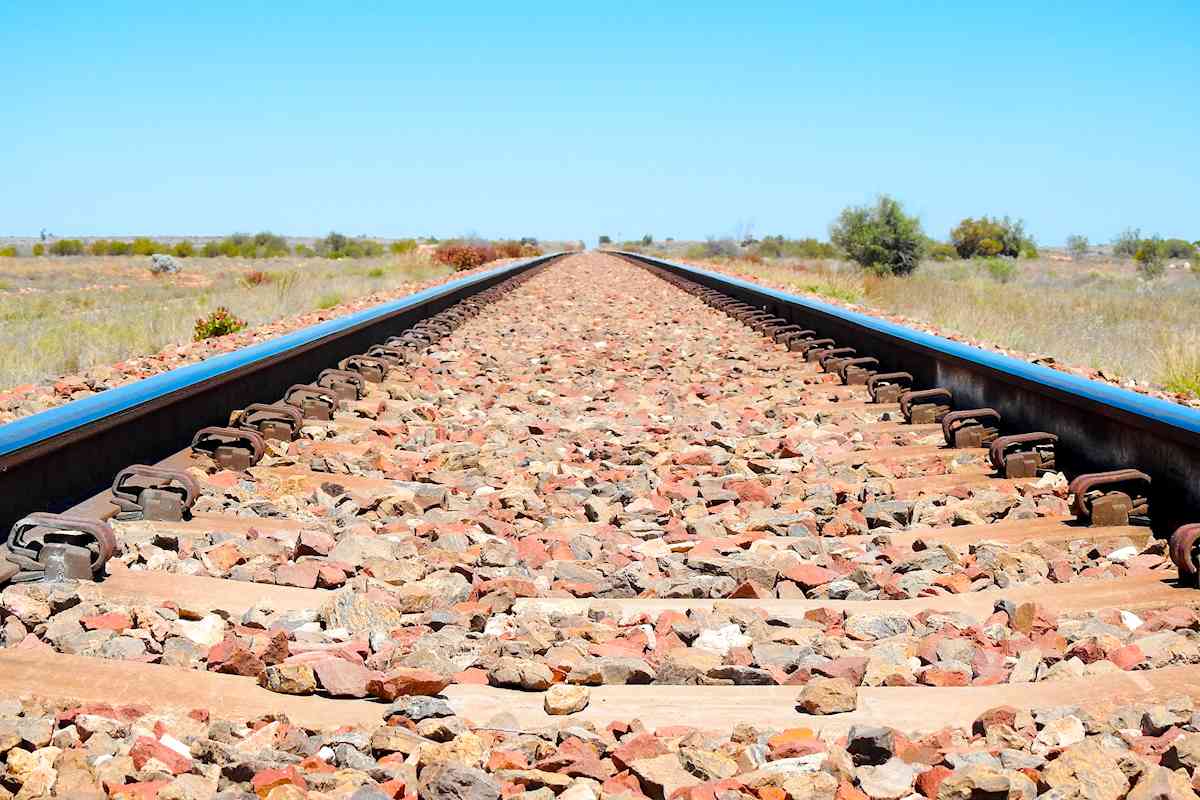
West of Ooldea the transcontinental line, now known as the Indian Pacific, heads off across the Nullarbor Plain. From here, the line stretches 478 kms without a single deviation, making this the longest straight section of rail track in the world.
Ooldea was the location of a permanent water source, which had provided water for the Aborigines for thousands of years. Tapped by the railway builders for the steam trains that travelled through here, the continual pumping exhausted the supply and the waterhole was dry by 1926.
Daisy Bates lived at Ooldea from 1919 to 1936.
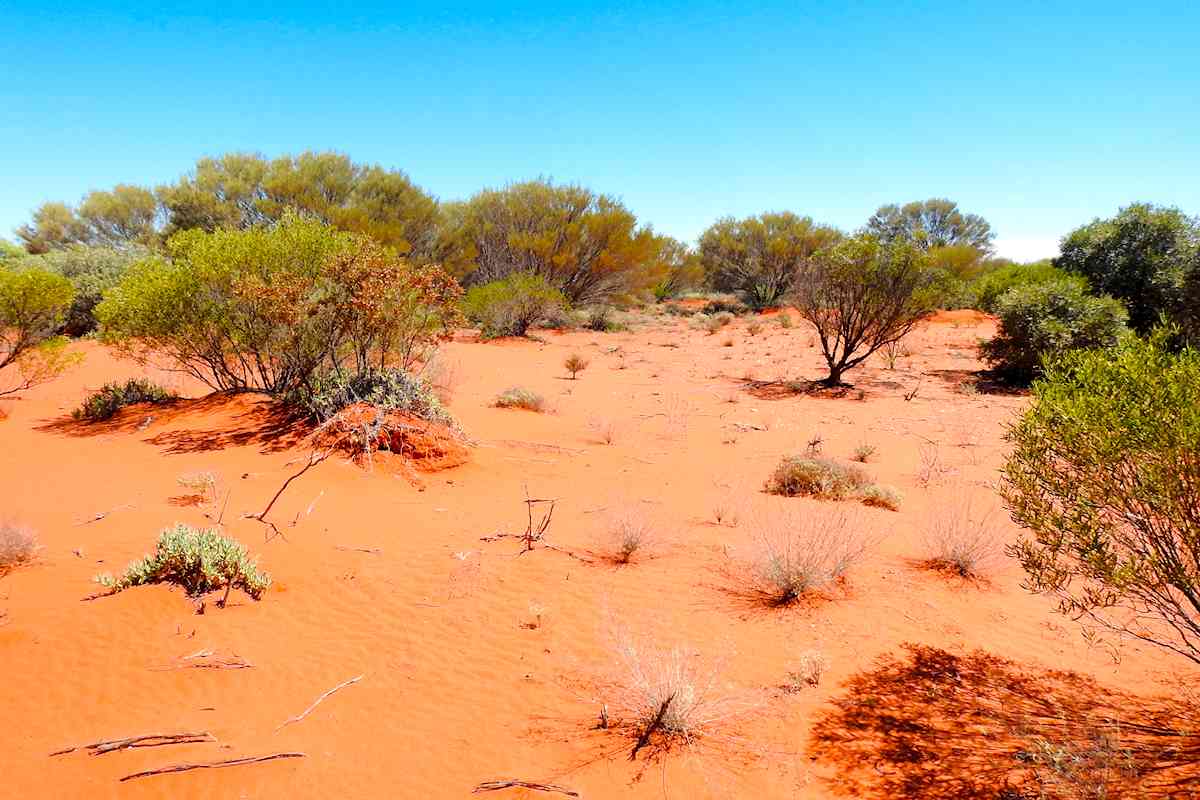
The arid sand dunes where she lived in a tent for these years are still visible. She genuinely believed that the Aboriginal people were dying out and did her best to protect these people and to preserve and understand their ancient culture.
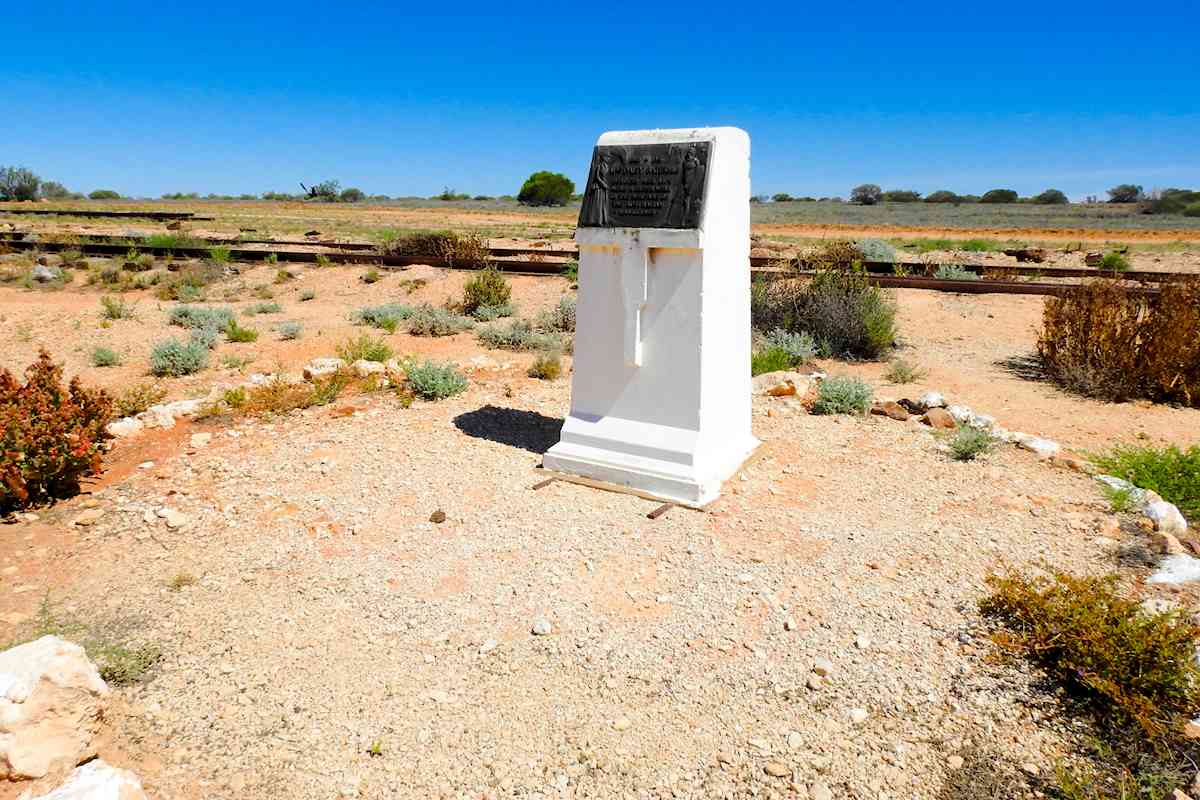
Ooldea is now a forgotten blip on the map. Trains no longer stop here. Any evidence of the railway era has long gone and no buildings remain.
Located beside the railway line in this isolated place is a small monument celebrating the life of Daisy Bates.
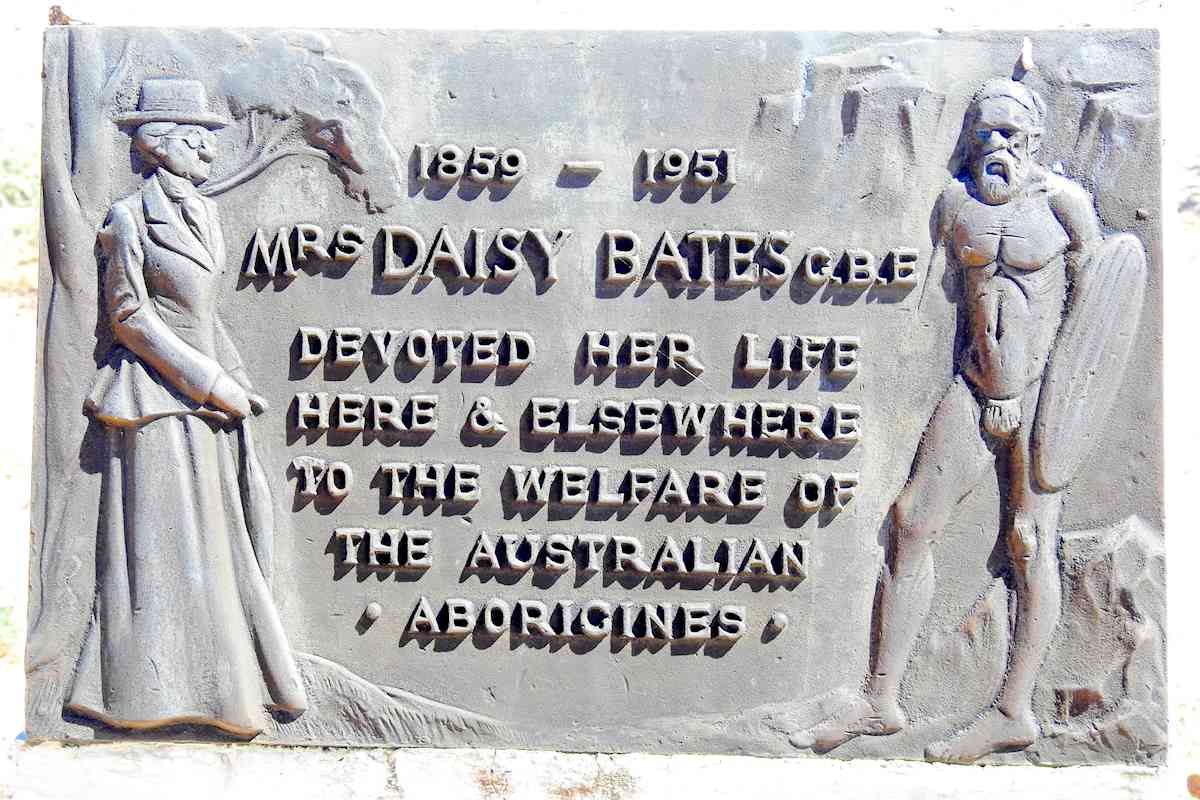
In the 1950’s, the last Aboriginal people in the area were forcibly moved away from their traditional lands due to a terrible threat. Ooldea is close to Maralinga, where the British conducted their nuclear tests during the 1950’s and 60’s.
Seven major atomic tests and hundreds of smaller tests were carried out. The actual human cost of these tests, both then and since, is immeasurable.
The indigenous people that lived in this land and the service personnel that worked in this area suffered displacement, injury and death. Both were treated callously by the British and Australian Governments and this appalling treatment continues today.
On at least two occasions the wind did not behave as the scientist predicted and nuclear fallout spread far and wide. It is now known that fallout drifted over populated areas the eastern seaboard and also south, over Adelaide.
This period highlights the danger of governments making decisions without scrutiny.
Maralinga has been given back to the Aboriginal people and permits are required to go there. Even though the land has been “cleaned”, many doubt that all the radioactive contamination has been cleared away.
Nullarbor is a Latin word, literally translating as “no trees”.
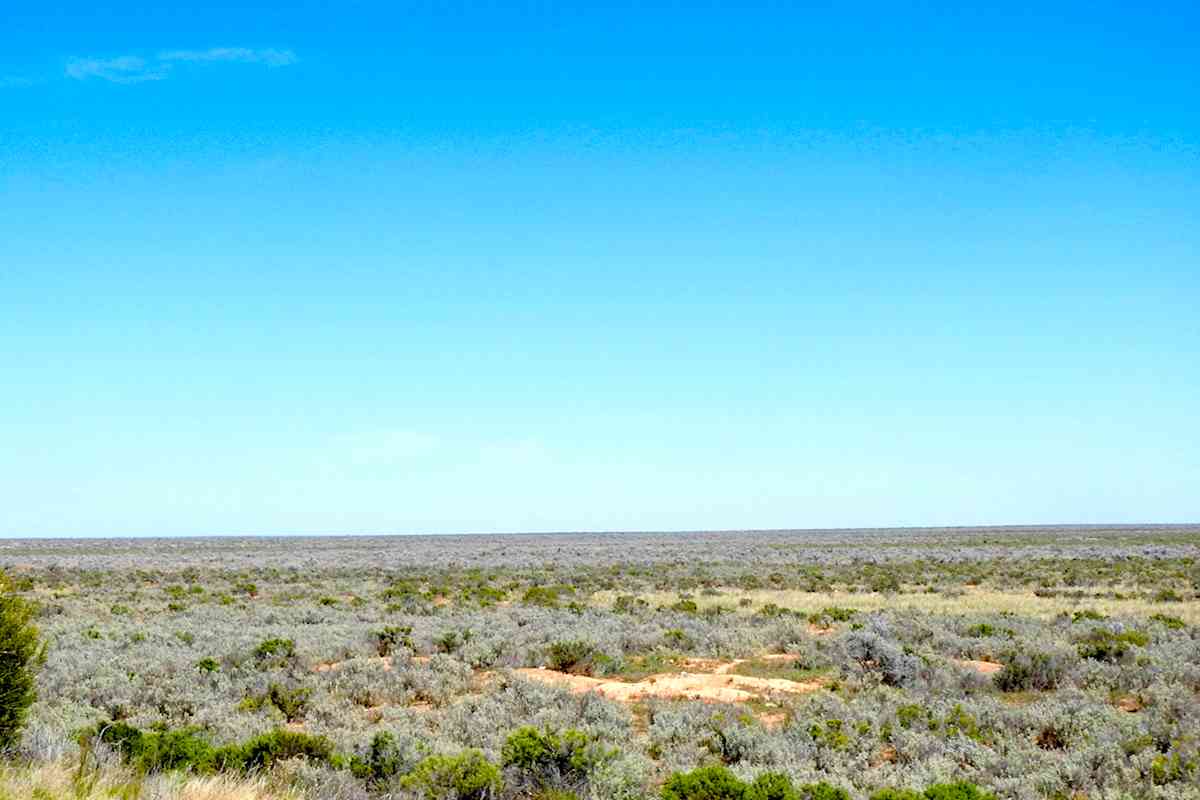
Stretching around 1,200 kms from east to west, it is indeed a vast and flat plain. And yes, in some places it is pretty much treeless. The Aboriginal people called it “Oondiri “, which means ‘the waterless’.
I would just call it windy. Boy is it windy! I guess there is nothing to stop the wind howling across this desolate plain. There are no hills. There are no creeks or watercourses. There are no towns and only a few scattered roadhouses offering reminders of civilization along the way.
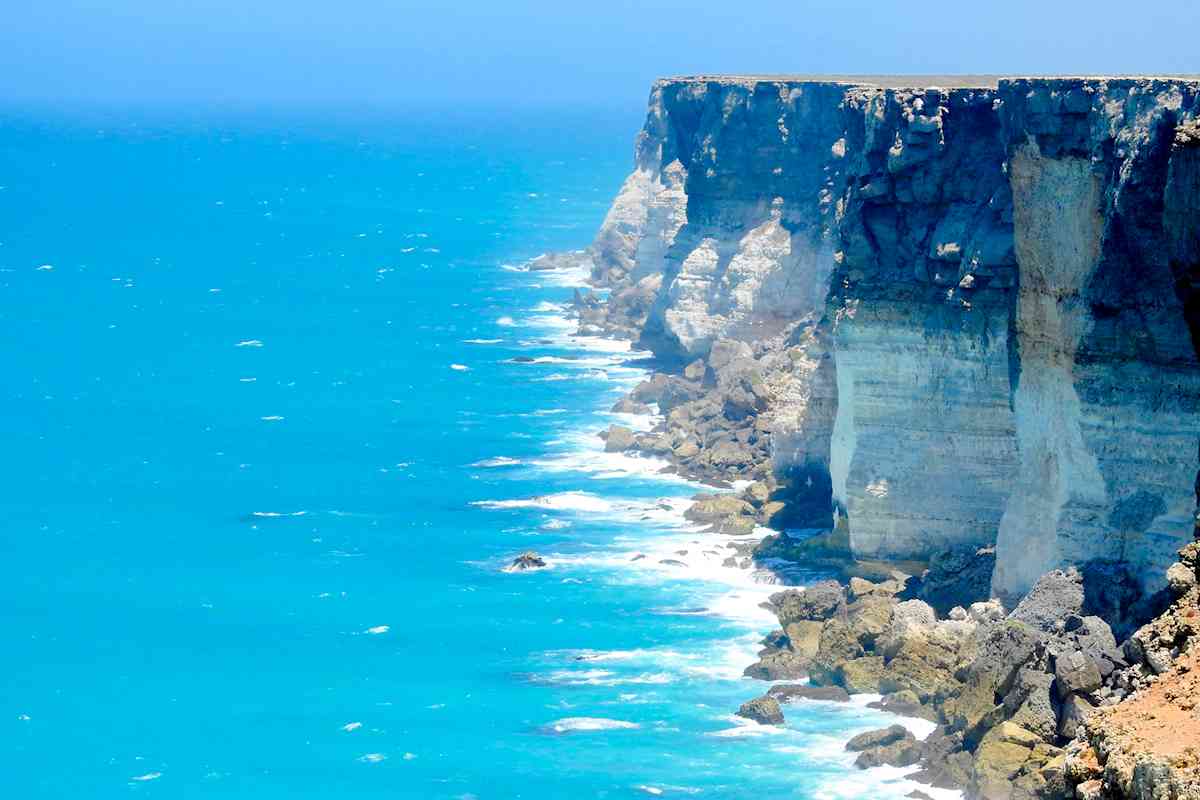 Travelling further westwards in South Australia, the road passes close to the cliffs of the Great Australian Bight. Over 60 metres high, the cliffs drop spectacularly into the Southern Ocean and in winter whales migrate in these waters. Unfortunately, I didn’t see any whales.
Travelling further westwards in South Australia, the road passes close to the cliffs of the Great Australian Bight. Over 60 metres high, the cliffs drop spectacularly into the Southern Ocean and in winter whales migrate in these waters. Unfortunately, I didn’t see any whales.
Crossing over the border into Western Australia, you lose daylight savings and then experience two new time zones, in pretty quick succession. All of which is a bit confusing initially, but I am now three hours behind the east coast.
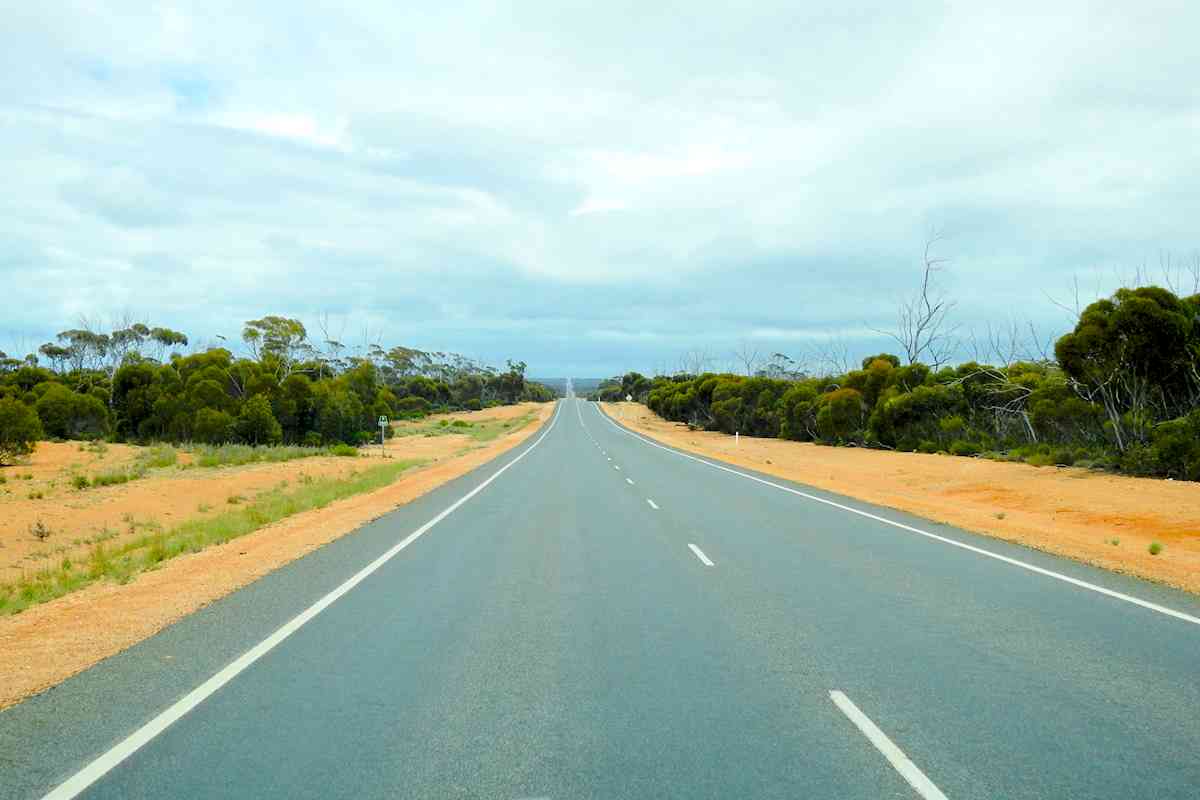
Out here, the road builders embraced the principle of straight lines. The roads are so straight that you sometimes wonder why you need a steering wheel. In fact, between Caiguna and Balladonia roadhouses in WA is the longest straight stretch of road in Australia, a truly mind-numbing 147 kilometres without a single curve.
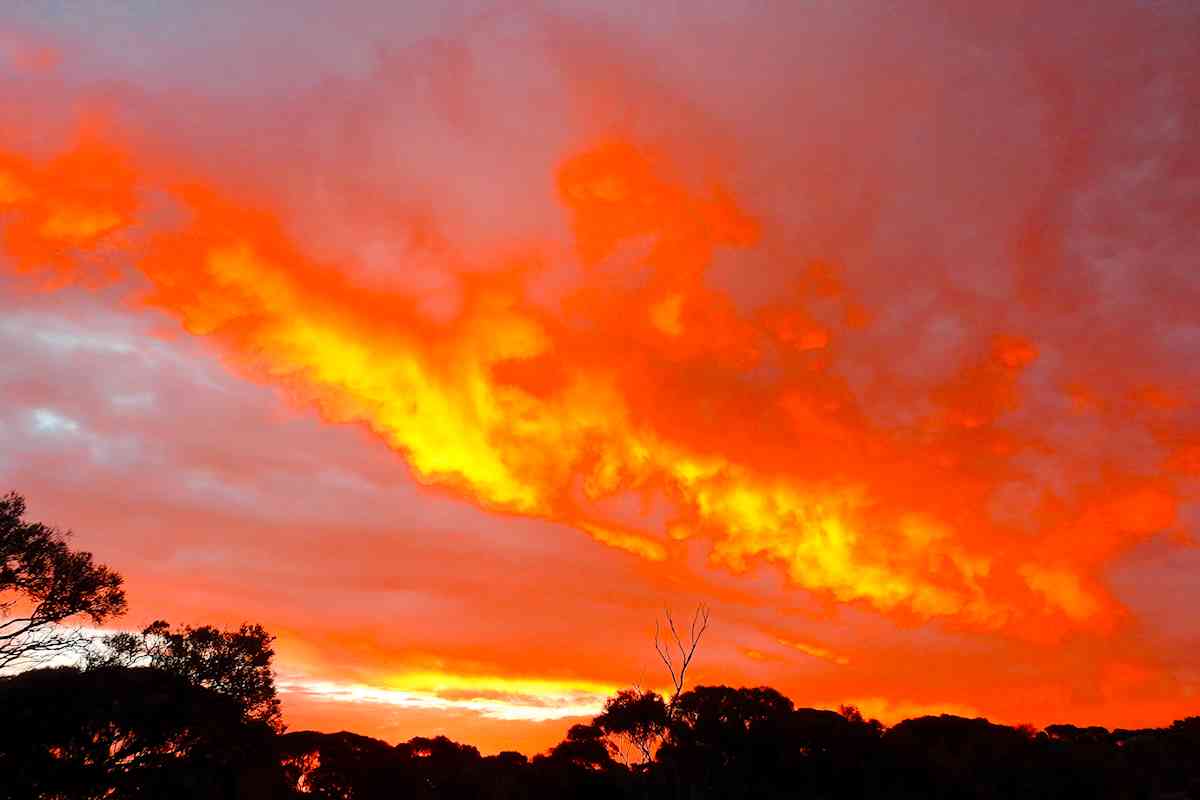
The Nullarbor used to be the home of many species of mega-fauna. I for one am really happy these guys are totally extinct. I am glad that I don’t have a chance to meet the 2.5 metre tall wombat that used to live here.
And I am totally ecstatic I don’t have to worry about encountering the lovely sounding Thylacoleo carnifex. This beastie was a freaking marsupial lion for goodness sake! It was considered to have been the most ferocious carnivore in this part of Australia. Apparently this thing could sit up on its back legs like a kangaroo and I guess that made it convenient for it to just rip your head off with its snarling, slobbering jaws…

